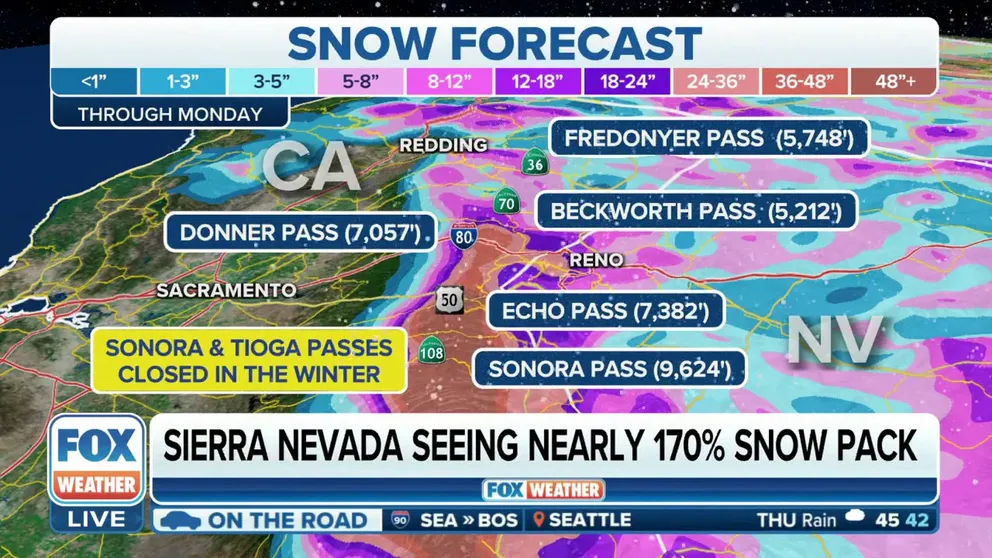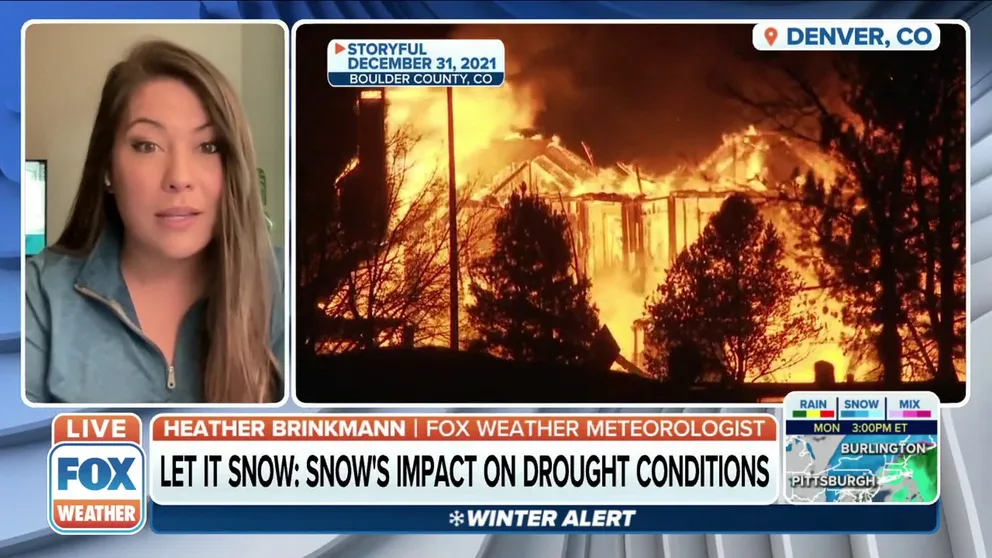'Extra winter's worth of precipitation' needed to bust California drought, scientist says
Every drop counts in the parched West, but scientists caution that early winter rain and snow may be a deja vu of last year's "rainy" season.
West storms set California up for healthy winter snowpack: Berkeley scientist
Lead Scientist and Manager at the UC Berkeley Central Sierra Snow Laboratory Andrew Schwartz tells FOX Weather snowpack levels are off to promising start as storms frequently move through the West.
Some western residents are breathing a sigh of relief after recent atmospheric river storms have drenched the drought-parched region, and more are on the way. However, scientists caution that it is too early to celebrate.
"At this point in time, we still have another four or five months in our snow season and in our typical rainy season," said Andrew Schwartz, lead scientist at the Central Sierra Snow Lab. "That means that while we're kind of scoring the touchdown in the first quarter of the game. Right now, we still have three-quarters left, and there's a lot that can happen."
He points to the record-breaking snow amounts the lab recorded last December. The Soda Springs, California, lab maintains one of the longest manual snow depth records in the world, dating back to 1879. The picture below is of the lab after over 17 inches of snow fell in Dec. 2021 – over half of the snow they usually get in a season.

The U.C. Berkeley Central Sierra Snow Lab after 16 feet of snow this December.
(U.C. Berkeley Central Sierra Snow Lab / FOX Weather)
"We had a massive snowpack as well (last year) because we had a record-breaking December," he said. "But January through March kind of shut off, and we didn't see as much precipitation come through in that period as we would have wanted."
In fact, January and February 2022 were the driest consecutive months in all of California’s 127 years of recordkeeping. The Sierra got half its annual rainfall from December to February, according to the California Department of Water Resources.
The Sierra snowpack is where much of the state’s water is stored, according to the Sierra Nevada Conservancy. That snowpack supplies drinking water to more than 75% of Californians. As the snow melts in the spring, the runoff replenishes reservoirs before the dry season in the summer.
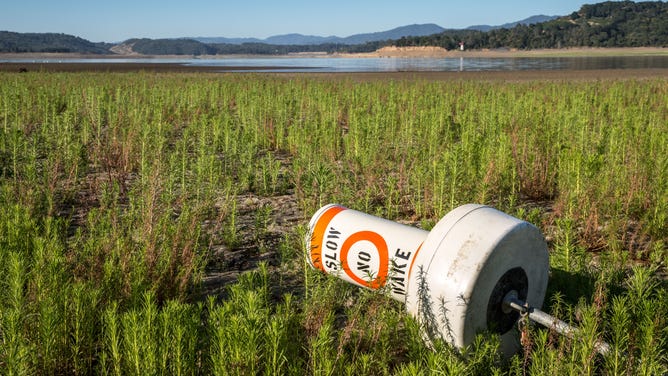
A boat buoy lies on the lake floor of Lake Mendocino, a California reservoir.
(Photo by George Rose/Getty Images / Getty Images)
How much snow do we need to make a dent in the drought?
"At this point in time, we realistically need about an extra winter's worth of precipitation," Schwartz said. "So it's not going to happen in one year. At minimum, we're probably looking at 3 to 4 of above-average before we can really talk about getting out of the drought."
In an average season, the lab sees 30 feet of snow. An extra season’s worth of snow would mean 60 feet in one year. That, he said, is a very "high task to try to take on."
California still has another 4 to 5 months of the rainy season. So, scientists will have a better idea of it fared in April.
ONGOING 22-YEAR DROUGHT IN WESTERN US IS DRIEST PERIOD IN OVER 1,200 YEARS, STUDY FINDS
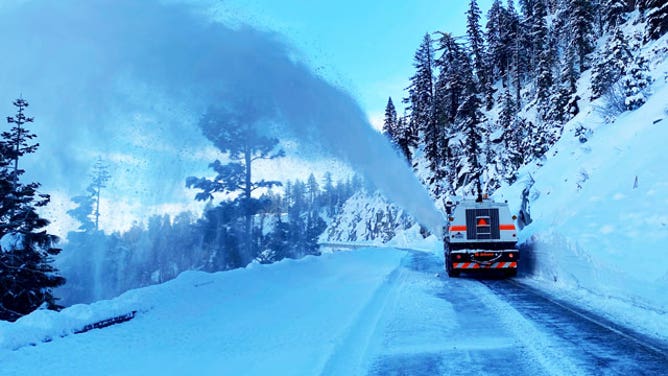
Crews clearing roads around Lake Tahoe in early December.
(CalTrans District 3 / FOX Weather)
"If we end up at average or above average come April, then we can start talking about solid impacts to the drought," Schwartz said.
The latest snowpack measurements at the lab show a very promising 170% of normal right now. The site has almost double its average snowfall to date, but it has been drier snow with less water content.
Schwartz calls the snow that the area generally gets "Sierra cement" because it is dense and waterlogged. That is very different from the fluffy so-called "Champagne powder" usually seen in the Colorado mountains.
HERE'S HOW BIG A SNOWMAN YOU COULD MAKE WITH ALL THAT SNOW

Snow-capped mountains surrounding Lake Tahoe.
(Santi Visalli / Getty Images)
Western states
California is not the only state hoping for snow.
"The Colorado River depends on the snowpack in the Rocky Mountains," said Patti Aaron, retired public information officer for the U.S. Bureau of Reclamation.
The northern Rockies are currently around 100% of average snowfall, while the southern Rockies drop to 30-75% of normal snowfall.
MORE HUMAN REMAINS FOUND AT LAKE MEAD
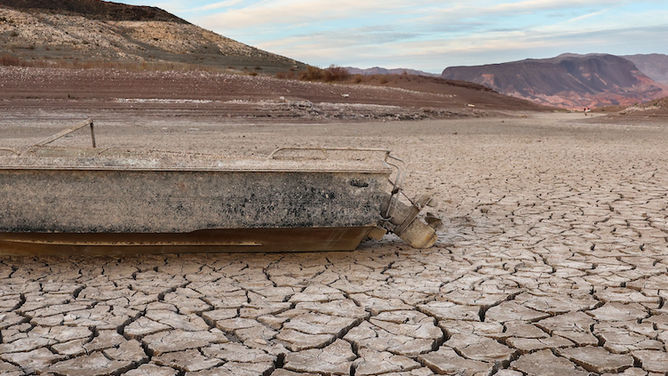
A formerly sunken boat rests on a now-dry section of lakebed at the drought-stricken Lake Mexaad on May 10, 2022 in the Lake Mead National Recreation Area, Nevada.
Lake Mead is the largest reservoir in the country and Lake Powell is the second largest. They are two of the many reservoirs built on the Colorado River to store water for western states to provide the resource during wet and dry times.
Forty million Americans rely on the entire Colorado Basin for water. The Colorado River irrigates 25% of the nation’s food grown on about 2 million acres of farmland. Up to 70% of the water that travels through the Hoover Dam goes to agriculture.
BOR scientists estimate the Rockies would need at least four consecutive years of average or above-average snowfall to fill the deficit in the Colorado River.
Drought was a contributing factor to multiple billion-dollar weather and climate disasters in the U.S. in 2021. Many consider snowpack crucial to drought mitigation.
SNOWFALL CONSIDERED CRUCIAL FOR LONG-TERM DROUGHT MITIGATION
What is snow's impact on drought conditions?
FOX Weather Meteorologist Heather Brinkmann talks about how snowfall is crucial for long-term drought mitigation.
The La Niña effect
Some climate specialists at the National Oceanic and Atmospheric Administration feel that a continued La Niña could lead to another year of reduced precipitation in the West. This would be the third winter in a row that the atmospheric phenomenon was partially responsible for robbing the west of water.
"The current circulation pattern (which is compounded by the western U.S. warming trend over the last 40 years) is causing precipitation to fall more often as rain than snow. This does not bode well for the winter mountain snowpack, which is crucial during the spring and summer melt season as a water supply during the dry season," said meteorologist Richard Heim, of NOAA's National Centers for Environmental Information.
The latest NOAA advisory gives a 71% chance of La Niña returning to a neutral pattern between February and April. That coincides with the end of the rainy season and will likely be too late for western states to benefit.
END OF TRIPLE-DIP LA NINA IN SIGHT
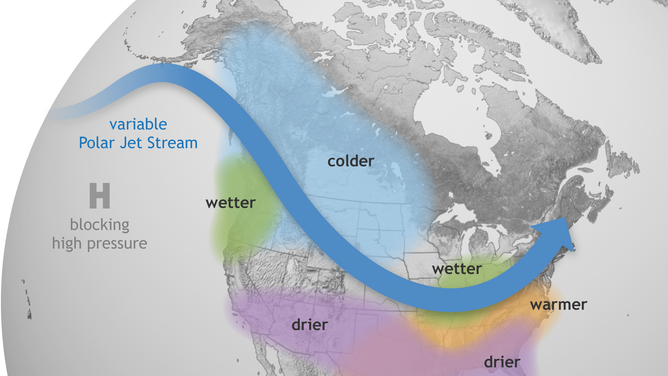
La Niña intensifies the average atmospheric circulation—surface and high-altitude winds, rainfall, pressure patterns—in the tropical Pacific. Over the contiguous United States, the average location of the jet stream shifts northward. The southern tier of the country is often drier and warmer than average.
(NOAA Climate.gov / NOAA)
The next set of storms promises plenty of snow and rain
The next set of storms traveling along the atmospheric river hits the Golden State just in time for New Year's snow.
NO REST FOR THE DREARY: ANOTHER ATMOSPHERIC RIVER AIMS TO SOAK CALIFORNIA

A parade of storms is poised to bring rain and snow to the western states.
(FOX Weather)
Flood and winter weather advisories are already in place. Watch how much rain and snow falls on FOX Weather on TV, FOXWeather.com and the FOX Weather app.
